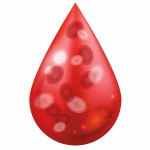A new type of drug targeting a portion of hepatitis C virus (HCV) known as microRNA substantially reduced HCV levels in chimps and continued to work for several months after dosing stopped, according to an announcement by the Southwest Foundation for Biomedical Research (SFBR) in San Antonio. What’s more, say the researchers, the novel treatment approach might also work against other viruses such as HIV.
Scientists used to think DNA did all the heavy lifting within cells, directing the majority of key functions that keep cells alive and functioning properly. In recent years, however, researchers discovered tiny snippets of genetic material, called microRNA. Just as microRNAs have been shown to carry important cellular functions, research has also confirmed they can be co-opted by microorganisms to reproduce and cause disease more effectively in the body.
To that end, Santaris Pharma A/S in Denmark has developed a drug to target microRNA122, a genetic fragment suggested to play a role in HCV replication. The new drug, SPC3649, is made with a new type of technology called “locked nucleic acid.” Santaris worked with SFBR to test the new drug in four chimpanzees chronically infected with HCV.
The treatment worked. The two chimps who received the higher dose of the drug had a 350-fold drop in HCV levels. What’s more, HCV levels remained lower for several months after the last dose of the drug was administered. Even more exciting is the fact that the treatment appears to have no detectable side effects thus far.
“This antiviral could be used alone to treat disease progression, and there are indications that it can convert [standard treatment] interferon non-responders to responders, so that non-responders to the current therapy could be treated with the combination of this drug with interferon,” said Robert Lanford, PhD, the lead author of the study from SFBR, which was published December 3 in Science Express.
The announcement from SFBR also concludes: “This proof of concept study suggests that the technology might also prove useful in treating many other diseases such as HIV, cancer and inflammatory diseases.”
Advertisement
Advertisement
Advertisement






Comments
Comments